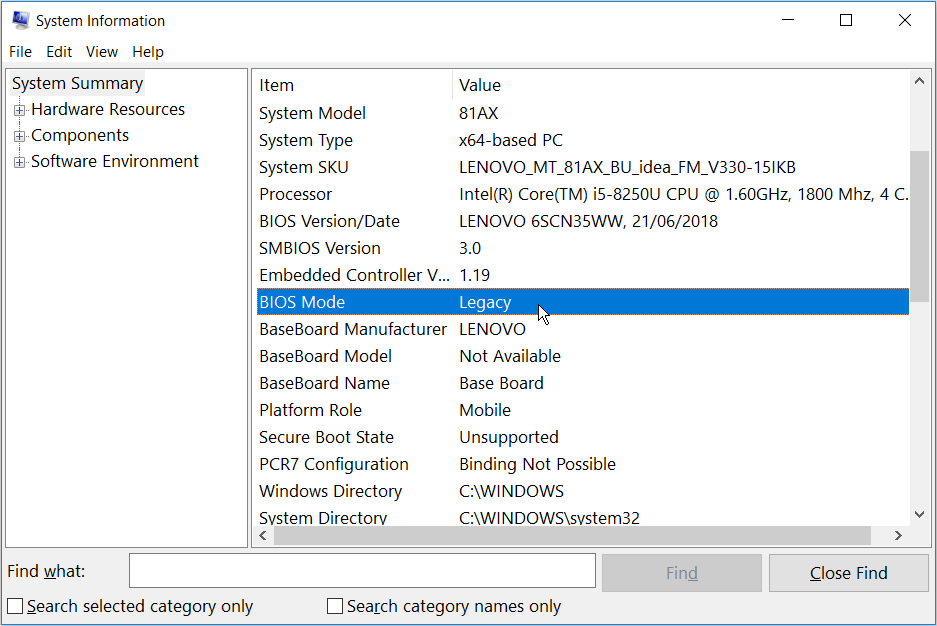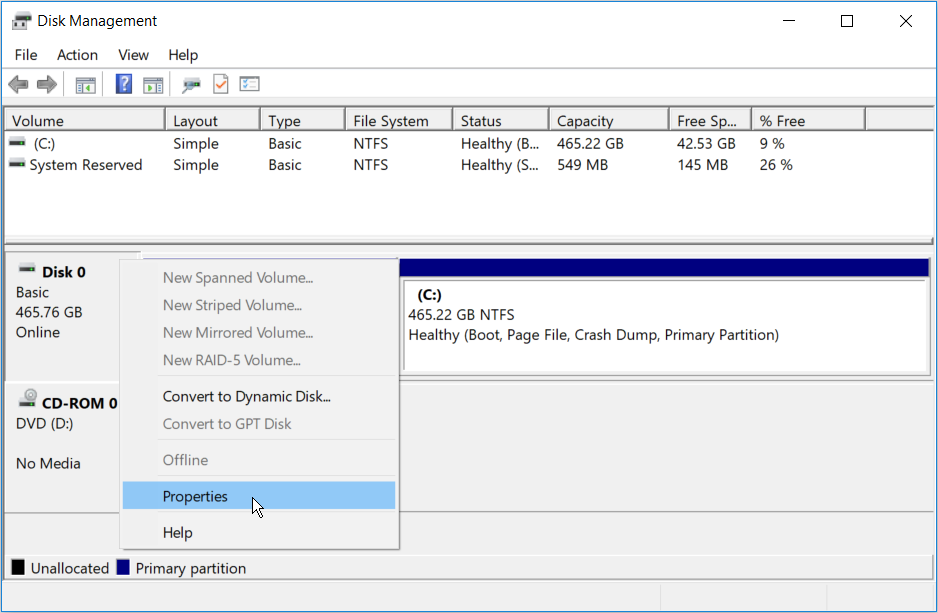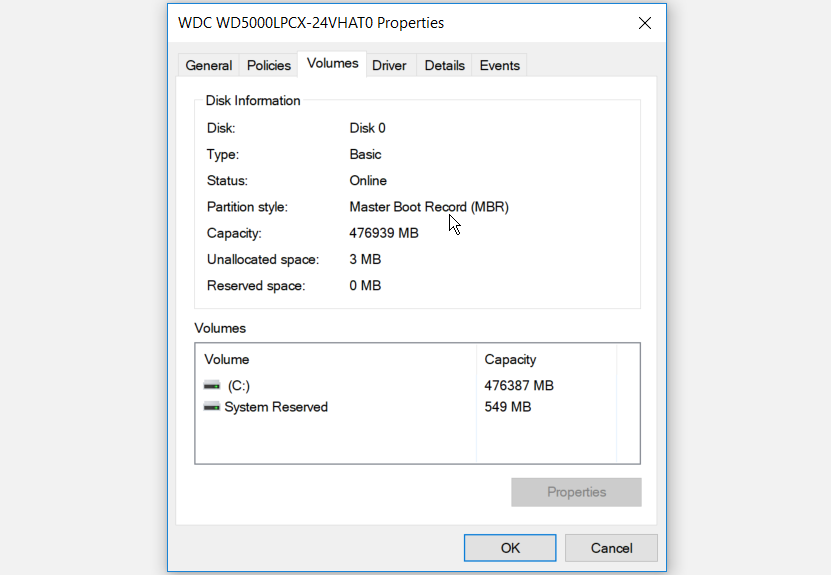Error Failed to Backup System Directory. Shutdown My Station and Try Again
The UEFI BIOS is a special software programme that connects your computer'southward firmware to its operating system (Os). It's the showtime program that runs when you plough on your PC. It checks to come across what hardware components your PC has, wakes the components upwards, and hands them over to the OS.
When opening the UEFI BIOS menu, you might find that you're unable to admission the UEFI Firmware Settings. This could hinder you lot from fixing several system problems. If these settings are missing from your PC, we'll show y'all how you lot can bring them back.
Why Are the UEFI Firmware Settings Missing?
Depending on your PC'southward manufacturer, you can access the UEFI BIOS settings in various means. If you tin't detect the UEFI Firmware Settings in the BIOS menu, then hither are some common reasons for this consequence:
- Your PC's motherboard doesn't support UEFI.
- The Fast Startup function is disabling access to the UEFI Firmware Settings carte du jour.
- Windows x was installed in Legacy Mode.
Here are some solutions you lot can endeavour.
1. Verify That Your PC Is Equipped With UEFI
Before attempting any other potential prepare, you lot demand to verify that your PC's motherboard is equipped to support UEFI. If your PC is an older model, the chances are that the UEFI Firmware Settings are unavailable.
Hither's how y'all can bank check your PC'due south BIOS Mode:
- Press the Windows Fundamental + R to open the Run command dialog box.
- Type msinfo32 and press Enter to open the System Information screen.
- Select Arrangement Summary on the left-manus side pane.
- Curl downwards on the right-mitt side pane and wait for the BIOS Manner option. Its value should either be UEFI or Legacy. If it's Legacy, then your PC can't access the UEFI Firmware Settings.

two. Bypass the Fast Startup Part
The Fast Startup function allows you lot to kicking up your PC quickly. When enabled, the feature could cutting off the delay in loading some UEFI BIOS bill of fare options. For this reason, it could preclude you lot from accessing the UEFI Firmware Settings. Bypassing this role could assist resolve your result.
- To get started, open the Windows Start Menu and select the Power icon.
- Hold the Shift key and and then selectShut down from the power options. This will bypass Windows ten fast startup and shut downwards your PC completely.
- Power on your computer once more and offset pressing the dedicated BIOS Setup key.
If this resolves your issue, you tin can disable the Fast Startup feature to brand the UEFI Firmware Settings accessible at all times. But, carry in mind that this volition hateful slightly longer boot-upwards times.
3. Create a Boot-to-UEFI Firmware Settings Desktop Shortcut
Some other way to resolve this result is to create a Desktop shortcut that forces your PC to kicking directly into the UEFI Firmware Settings menu.
Here's how you can do this:
- Right-click on a blank space on your Desktop, select New, and then select Shortcut.
- On the next screen, type shutdown /r /fw and click the Adjacent button.
- Selection a suitable proper noun for the shortcut and so click Finish.
- Correct-click the shortcut, select the Properties pick, and and then select the Avant-garde button.
- On the side by side screen, bank check the Run equally administrator box and hitOK.
- SelectUtilise >OK to apply these changes.
- To utilize the shortcut, double-click on it. Your PC should restart directly into the UEFI Firmware Settings menu.
four. Change the BIOS From Legacy to UEFI past Converting MBR Disk to GPT Disk
Depending on your PC's historic period and specifications, it either uses a Chief Boot Record (MBR) or a GUID Partition Table (GPT) disk. Even if your motherboard is equipped with UEFI capabilities, UEFI Firmware Settings won't be attainable if your bulldoze is equipped with the MBR disk. In this instance, y'all'll demand to switch the BIOS from Legacy to UEFI past converting the MBR disk to a GPT deejay.
Considering that y'all are converting a organization deejay, it's best to create a arrangement paradigm to back up your system. Nosotros strongly advise taking a arrangement backup as there is the potential for data loss during this process.
If you already know that your partition is the MBR-type and your organisation is capable of booting from UEFI, yous're ready. Y'all can go ahead with converting your drive to GPT format.
Otherwise, here'southward how yous can cheque whether your PC is equipped with the MBR or GPT disk.
- Press the Windows key + R to open the Run command dialog box.
- Type diskmgmt.msc and click Enter to open up the Disk Direction window.
- Right-click on Deejay 0 (or the deejay that contains the Windows installation) and select Properties.

In the Properties screen, click the Volumes tab. Look for the Partition style option under Deejay Information.

If the partition style is GUID Partition Table (GPT), then at that place's no demand to continue with the conversion.
5. Clear the CMOS Settings to Restore Default BIOS Settings
As a concluding resort, you can reset the CMOS settings from your PC's motherboard. This will help restore your computer to its default BIOS settings.
Here's how you can go started with this.
- Turn off your computer and unplug it from the ability source.
- Remove the bottom cover of your PC. From here, look for the CMOS bombardment and jumpers on the motherboard.
- To hands locate the CMOS jumpers, expect for a "CLR CMOS" reading on the motherboard.
- Ordinarily, y'all'll detect iii pins where the CMOS jumpers are located. The jumpers will be located on only two of those pins. If they're on the first and second pins, shift them to the 2nd and 3rd pins. If your motherboard only has 2 pins, the jumpers will probable exist plugged into one pin. In this example, plug them on both pins.
- Next, remove the CMOS battery from its slot. Wait for near 15 seconds, and so put it back on.
- Motion the CMOS jumpers back to their original pins.
- Put the computer cover dorsum on, plug in your calculator, and power it on.
On more advanced motherboards, y'all'll find a designated push button for resetting the CMOS settings. This will exist labeled "CMOS," "CMOS_SW," or something like. Yous can reset the CMOS settings by pressing this push and holding it down for a few seconds.
If you struggle to find whatsoever hardware components on your PC, cheque your motherboard transmission for assist. Alternatively, you tin check your motherboard type and find out more well-nigh it online.
Missing UEFI Firmware Settings? Not Anymore
Now you know how to set the missing UEFI Firmware Settings in Windows 10. You'll find these settings handy when it comes to troubleshooting various Windows ten arrangement issues. If your motherboard doesn't back up these settings, then it's fourth dimension to consider an upgrade.
About The Author
Source: https://www.makeuseof.com/ways-to-fix-missing-uefi-firmware-settings/

0 Response to "Error Failed to Backup System Directory. Shutdown My Station and Try Again"
Post a Comment